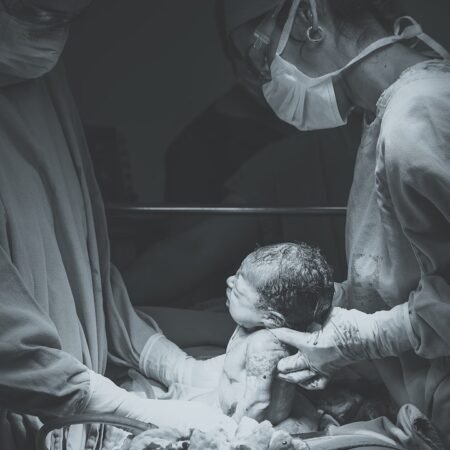Top Tips for Selecting the Perfect Outfits for Your Newborn Baby
When it comes to selecting the perfect outfits for your newborn baby, comfort and safety should be your top priorities. Newborns have delicate and sensitive skin, so it’s crucial to choose clothing that is soft, breathable, and non-irritating. Look for fabrics like organic cotton, bamboo, or merino wool, which are gentle on the skin and hypoallergenic. Avoid clothing with rough seams, scratchy tags, or tight elastic bands that can cause discomfort or irritation. Additionally, opt for clothing with easy access for diaper changes and dressing, such as snap closures or stretchy necklines. Prioritizing comfort and safety in your baby’s clothing choices will ensure that they are happy, healthy, and content.
When it comes to safety, it’s important to consider factors such as loose buttons, strings, or embellishments that could pose a choking hazard. Choose clothing with secure closures and avoid any small parts that could potentially be swallowed. Additionally, be mindful of the fit of the clothing to prevent any risk of suffocation or overheating. Always follow the guidelines for safe sleepwear, such as avoiding loose blankets or clothing with hoods that could cover your baby’s face. By prioritizing comfort and safety in your baby’s wardrobe, you can ensure that they are well-protected and at ease in their clothing.
Key Takeaways
- Choose outfits that are comfortable and safe for your newborn baby
- Opt for fabrics that are gentle on your baby’s sensitive skin
- Consider practicality and functionality when selecting baby clothing
- Select weather-appropriate outfits to keep your baby comfortable
- Explore gender-neutral and versatile options for your baby’s wardrobe
Choosing the Right Fabrics for Baby’s Sensitive Skin
Selecting the right fabrics for your baby’s sensitive skin is essential for their comfort and well-being. Newborns have delicate skin that is prone to irritation and rashes, so it’s important to choose fabrics that are gentle and non-irritating. Organic cotton is a popular choice for baby clothing due to its softness, breathability, and hypoallergenic properties. Bamboo is another excellent option, as it is naturally antibacterial, moisture-wicking, and incredibly soft. Merino wool is also a great choice for newborns, as it is temperature-regulating, moisture-wicking, and naturally flame-resistant.
Avoid synthetic fabrics like polyester or nylon, as they can trap heat and moisture against the skin, leading to discomfort and potential skin irritation. Additionally, be mindful of any chemical treatments or dyes used in the fabric, as these can also cause skin reactions in sensitive newborn skin. When in doubt, opt for natural, organic fabrics that are free from harsh chemicals and dyes. By choosing the right fabrics for your baby’s clothing, you can ensure that they are comfortable, happy, and free from any skin irritations.
Considering Practicality and Functionality in Baby Clothing
Practicality and functionality are key factors to consider when selecting outfits for your newborn baby. New parents often find themselves changing diapers multiple times a day, so it’s important to choose clothing that allows for easy access during diaper changes. Look for onesies with snap closures at the crotch or stretchy necklines that can be easily pulled over your baby’s head. Avoid clothing with complicated buttons or zippers that can be time-consuming and frustrating to deal with during diaper changes.
Additionally, consider the ease of dressing and undressing your baby when selecting their outfits. Newborns can be wiggly and squirmy during clothing changes, so opt for clothing with wide openings and stretchy fabrics that make dressing a breeze. Avoid clothing with tight necklines or sleeves that can be difficult to maneuver over your baby’s head or arms. Prioritizing practicality and functionality in your baby’s clothing choices will make your life as a parent much easier and more convenient.
Tips for Selecting Weather-Appropriate Outfits
| Factors to Consider for Newborn Baby Dress | Description |
|---|---|
| Size | Ensure the dress is the right size for the baby’s age and weight. |
| Fabric | Choose soft, breathable fabrics like cotton to prevent skin irritation. |
| Comfort | Prioritize comfort with features like soft seams and tagless designs. |
| Weather | Consider the season and climate when selecting the dress. |
| Accessibility | Opt for easy-to-open closures for quick diaper changes. |
Selecting weather-appropriate outfits for your newborn baby is essential for their comfort and well-being. Newborns are unable to regulate their body temperature effectively, so it’s important to dress them appropriately for the current weather conditions. In colder weather, opt for layers of clothing to keep your baby warm and cozy. Start with a soft onesie as a base layer, then add a long-sleeved shirt and pants, followed by a sweater or jacket if needed. Consider adding a hat and mittens to keep your baby’s head and hands warm.
In warmer weather, choose lightweight and breathable clothing to keep your baby cool and comfortable. Opt for short-sleeved onesies or rompers made from natural, breathable fabrics like cotton or bamboo. Avoid overdressing your baby in hot weather to prevent overheating and discomfort. Additionally, be mindful of sun protection by choosing clothing with built-in UPF or adding a wide-brimmed hat and sunglasses to shield your baby from harmful UV rays. By selecting weather-appropriate outfits for your newborn, you can ensure that they are comfortable and well-protected in any climate.
Exploring Gender-Neutral and Versatile Options
When selecting outfits for your newborn baby, consider exploring gender-neutral and versatile options that can be worn by any baby regardless of their gender. Gender-neutral clothing is not only practical and cost-effective but also promotes inclusivity and diversity. Look for neutral colors like white, gray, beige, or mint green that can be easily mixed and matched with other pieces in your baby’s wardrobe. Opt for classic styles and patterns that are timeless and suitable for any baby.
Versatile options such as unisex onesies, rompers, or sleepers can be worn by both boys and girls, making them a practical choice for parents who plan on having more children in the future. By choosing gender-neutral and versatile options for your baby’s wardrobe, you can save money and reduce waste by reusing clothing for future siblings. Additionally, gender-neutral clothing promotes equality and allows babies to express their individuality without conforming to traditional gender stereotypes.
Incorporating Personal Style and Preferences
While practicality and functionality are important factors to consider when selecting outfits for your newborn baby, it’s also essential to incorporate your personal style and preferences into their wardrobe. As a parent, you have the opportunity to dress your baby in adorable and stylish outfits that reflect your own taste and personality. Whether you prefer classic and timeless styles or trendy and fashion-forward looks, there are endless options available to suit your preferences.
Consider adding fun patterns, vibrant colors, or cute accessories to your baby’s wardrobe to showcase their unique personality. Mix and match different pieces to create stylish and coordinated outfits that reflect your personal style. Don’t be afraid to experiment with different looks and have fun expressing your creativity through your baby’s clothing choices. By incorporating your personal style and preferences into your baby’s wardrobe, you can create a fashionable and adorable look that reflects your own taste while keeping your little one comfortable and stylish.
Budget-Friendly and Sustainable Clothing Choices for Newborns
Selecting budget-friendly and sustainable clothing choices for your newborn is not only practical but also environmentally conscious. Babies grow quickly during their first year, often outgrowing their clothing within a matter of months. Instead of splurging on expensive designer outfits that will only be worn a few times, consider investing in affordable yet high-quality basics that can be mixed and matched with other pieces in your baby’s wardrobe.
Look for budget-friendly options such as multi-packs of onesies, sleepers, or bodysuits that offer great value for money. Consider shopping at thrift stores or consignment shops to find gently used baby clothing at a fraction of the cost. Not only will you save money by purchasing secondhand clothing, but you’ll also reduce waste by giving pre-loved items a new lease on life. Additionally, opt for sustainable clothing options made from organic or eco-friendly materials that are gentle on the environment.
By choosing budget-friendly and sustainable clothing choices for your newborn, you can save money while reducing your carbon footprint. Prioritize quality over quantity by investing in durable and long-lasting pieces that can withstand multiple washes and wears. By making conscious choices about your baby’s clothing, you can contribute to a more sustainable future while providing them with comfortable and stylish outfits.
In conclusion, selecting the perfect outfits for your newborn baby involves careful consideration of comfort, safety, practicality, weather-appropriateness, gender-neutrality, personal style, budget-friendliness, and sustainability. By prioritizing these factors when choosing your baby’s clothing, you can ensure that they are happy, healthy, stylishly dressed while also being environmentally conscious. Remember to prioritize comfort and safety by choosing gentle fabrics that are free from harsh chemicals or irritants while also considering practicality in terms of easy access for diaper changes and dressing. Select weather-appropriate outfits to keep your baby comfortable in any climate while exploring gender-neutral options that promote inclusivity and versatility in their wardrobe. Incorporate your personal style into their outfits while also making budget-friendly and sustainable choices that benefit both your wallet and the environment. With these top tips in mind, you can confidently select the perfect outfits for your precious newborn baby.
FAQs
What are some important factors to consider when selecting outfits for a newborn baby?
Some important factors to consider when selecting outfits for a newborn baby include the fabric of the clothing (soft and breathable materials like cotton are ideal), the ease of putting the clothing on and taking it off (items with snaps or zippers are convenient), and the weather and temperature of the environment the baby will be in.
What are some essential clothing items for a newborn baby?
Essential clothing items for a newborn baby include onesies, sleepers, hats, socks, and mittens. These items provide comfort and warmth for the baby and are easy to put on and take off.
How can I ensure that the clothing I select is safe for my newborn baby?
To ensure that the clothing you select is safe for your newborn baby, make sure that there are no loose buttons, strings, or other small parts that could pose a choking hazard. Additionally, opt for clothing that is free from harsh chemicals and dyes, and always wash new clothing items before putting them on your baby.
What are some tips for selecting the right size of clothing for a newborn baby?
When selecting the right size of clothing for a newborn baby, it’s important to keep in mind that babies grow quickly. It’s best to have a mix of newborn and 0-3 month sizes to accommodate your baby’s growth. Pay attention to the weight and height recommendations on the clothing labels to help guide your selection.
Are there any specific considerations for selecting outfits for a premature newborn baby?
For premature newborn babies, it’s important to look for clothing that is specifically designed for premature or low birth weight babies. These items are typically smaller in size and gentler on the baby’s delicate skin. It’s also important to consider the baby’s medical needs and any equipment they may be connected to when selecting outfits.





























